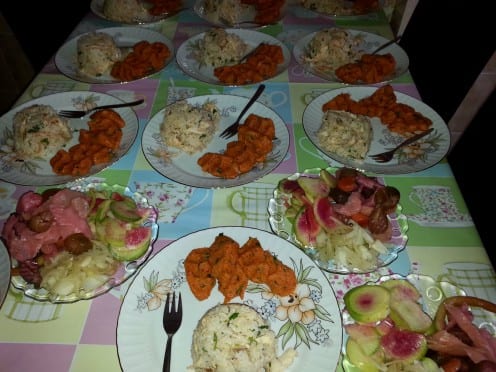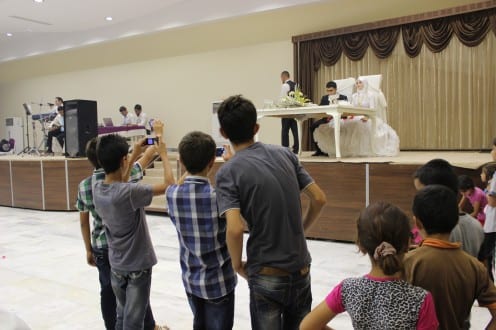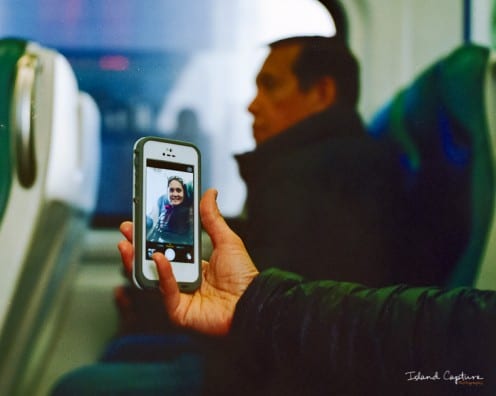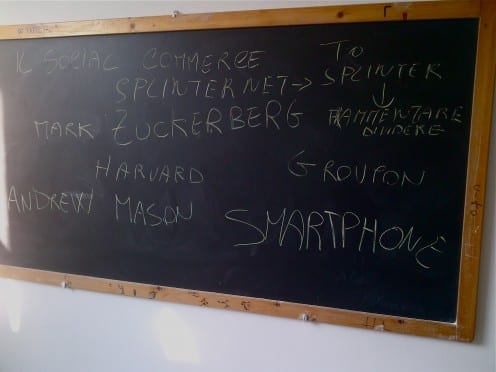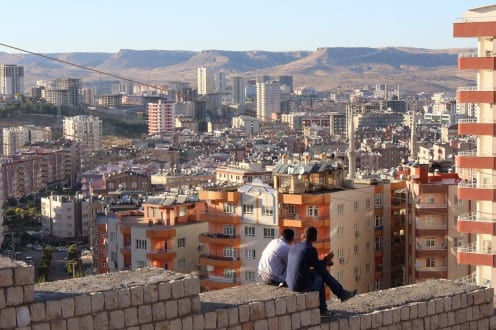What would happen if Facebook disappears tomorrow?
By Razvan Nicolescu, on 30 March 2015

A friend explaining how she uses WhatsApp (Photograph by Razvan Nicolescu)
This quite obvious question kept coming up during my fieldwork in southeast Italy for different reasons. First, the transitory nature of Internet-based platforms and services is a big challenge for anthropologists; so we had to adapt our research methods and dissemination strategy to respond to this. Secondly, people in Grano themselves put this question in different ways as many recognized that Facebook started to be part of their everyday lives. Finally, many people were quite anxious about Facebook because they could not see any alternative to this service.
The vast majority of people I talked to agreed that the short answer to the question in the title is… ‘Nothing!’ – they would not be affected in any way if Facebook would disappear some day. This seems to also be supported by the second comparative questionnaire from the research. For example, 82% of the respondents answered the question: ‘Has using social media made you a) happier, b) less happy, c) no difference,’ by indicating variant (c).* Motivations for this option were usually related to the fact that Facebook was perceived as a nice and attractive gadget or accessory that could hardly be related to the sources of happiness or personal satisfaction with their lives. These sources were located in very precise places inside and outside the individual, unlike Facebook that few people had a clear idea of what really is and how it functions.
At the same time, only 34% of Facebook users think their use of the service is becoming less frequent, while almost 50% think their usage remained the same. The nature of our research could not identify trends, but the quantitative data confirms the key finding that even if most people in Grano do not see social media as too important and revealing, they nevertheless use it increasingly more. But the intensity of the usage is not limited to more frequent use or interaction on one single platform, such as Facebook, but mainly to continuously finding alternative platforms on the horizontal: such as WhatsApp, Instagram, or Twitter for example.
As I will detail in a future post, these platforms function so that each sustains or complements the use of the others so that there is actually no overlapping between platforms. And in particular, Facebook acts as a common kind of reference for all other social media. In this context, the ethnographic material suggests that not Facebook itself, but the kind of new public visibility that this service introduced is destined to not disappear. While Facebook could be replaced, outclassed, or rebranded it is what people have discovered about themselves by using Facebook that will stay there a little longer.
And this is why nobody in Grano would really mind if Facebook would disappear one day: they had already gained a new technology. This is established by the totality of social media people use and not by any one platform in particular.
P.S. – Facebook, as indeed all Internet giants, are already aware of this; and the way they fight their own ‘fear of disappearance’ is by continually transforming themselves and inventing new horizontal markets. This is simple marketing but what economic reality proves is that even these basic methods are extremely volatile in the Internet market. It is relatively easier to transform and invent in the domain of communications than when you are stuck in an Internet-based version of a conventional business, for example, and at least another 9 anthropologists who studied social media around the world also know why.
* This data is preliminary. Accurate data based on the quantitative questionnaires will be provided in June 2015.
 Close
Close


